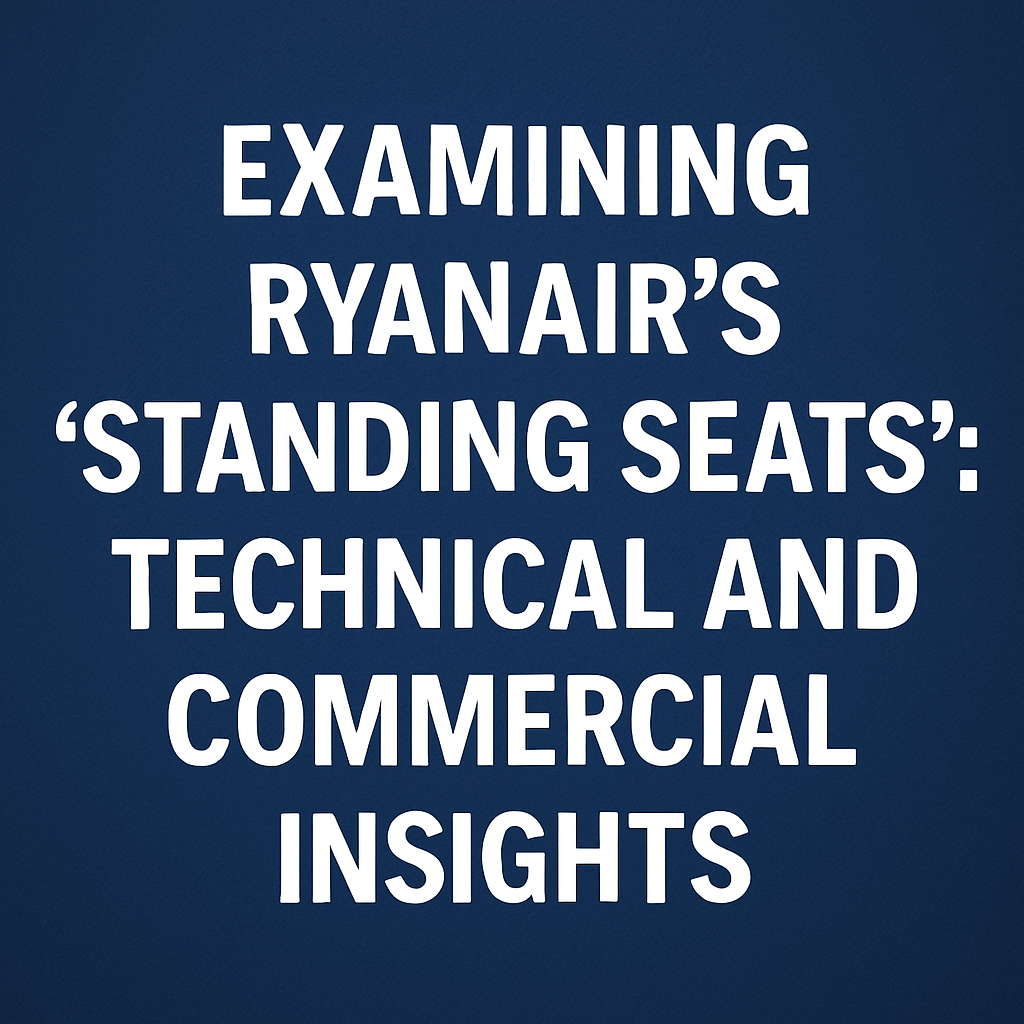Examining Ryanair’s ‘Standing Seats’: Technical and Commercial Insights

Introduction
Low-budget air travel has expanded dramatically over the past decade. Carriers such as Ryanair have pushed the boundaries of cost efficiency, at times advertising one-way fares from just €7.99. Recently, viral social media posts reignited discussion around a concept long mooted by Ryanair’s CEO Michael O’Leary: ‘standing seats’ or saddle-style perches designed to boost passenger numbers per flight.
Origin of the ‘Standing Seat’ Concept
Although no formal order has been placed, the idea originated in public remarks by O’Leary around 2010, with follow-up proposals such as pay-per-use lavatories and weight-based surcharges. In many mock-ups, manufacturer Aviointeriors’ “Skyrider” prototype—first unveiled in 2012—depicted vertical seats with minimal cushioning, harness-style restraints, and overhead poles for stability.
Design and Technical Specifications
- Seat Geometry: Narrow bicycle-saddle cross-section (approx. 22 cm at widest point), fixed at a 75° angle to the cabin floor.
- Cushioning and Materials: High-density foam core; polyurethane cover rated to 150,000 abrasion cycles (Martindale test).
- Restraints: Four-point harness style belt engineered to meet 16 g vertical crash-load requirements.
- Attachment Points: Reinforced aluminium keel beam integrated into existing 737 MAX floor tracks, adding ~5 kg per seat row.
- Evacuation Performance: Preliminary tests by Aviointeriors report 90-second cabin evacuation compliance under European Union Aviation Safety Agency (EASA) standards.
Regulatory and Safety Considerations
“Any new seat design must pass dynamic crash tests, flammability requirements and rapid evacuation drills to receive certification from EASA or the FAA,” notes Dr. Elena Martín, an aerospace engineer specialising in cabin safety at the Technical University of Munich.
To date, Aviointeriors has confirmed the Skyrider remains a conceptual prototype. No formal EASA Type Certificate Supplement has been sought. Under EASA CS-25 regulations, seat installations must withstand 16 g on both horizontal and vertical axes, demonstrate 120 cm head injury criteria (HIC), and maintain aisle clearance for emergency egress.
Passenger Comfort and Ergonomics
The most significant barrier to adoption is human factors. In a semi-upright posture, passengers bear weight through the ischia (sit bones) and lower thighs, potentially leading to:
- Circulatory Stress: Restricted venous return, raising the risk of deep-vein thrombosis (DVT) even on short flights.
- Musculoskeletal Discomfort: Load concentration on pelvic girdle and lower spine, risking fatigue and lumbar strain.
- Thermal Stress: Narrow seating could impair microclimate airflow, exacerbating heat build-up.
Recent surveys by the International Air Transport Association (IATA) indicate less than 5% of leisure travellers would opt for a saddle seat at any price above €10, citing comfort as the primary deterrent.
Commercial Viability and Business Case
From an airline economics standpoint, adding two to four additional passengers per 737 MAX can reduce unit costs (Cost per Available Seat Kilometer, CASK) by up to 3%. However, this gain must be weighed against:
- Increased Turnback Time: More passengers may slow boarding and disembarkation, impacting aircraft utilization.
- Higher Fuel Burn per Passenger: While fuel per flight remains constant, seat density shifts the per-seat fuel share.
- Brand and Regulatory Risk: Potential reputational damage and stricter oversight if passenger complaints rise.
Environmental Impact Analysis
Higher seat densities can marginally improve fuel-efficiency on a per-passenger basis, translating into lower CO₂ emissions per seat-kilometre. According to a report by the European Aviation Environmental Report 2024:
“A 5% increase in seat density across the short-haul fleet could yield up to 2% reduction in total fuel consumption, assuming load factors exceed 85%.”
Yet, any gains may be offset by potential route expansion and frequency increases, as airlines capitalise on ultra-low fares to stimulate demand.
Expert Opinions and Outlook
Professor James Collins, Head of Aviation Studies at Cranfield University, summarises:
“While technically feasible under CS-25, standing seats push ethical and ergonomic boundaries. Regulatory bodies will be cautious, and public acceptance remains the biggest hurdle.”
For now, Aviointeriors has confirmed to multiple outlets, including Euronews, that the Skyrider “is not part of our official product line and there are no active orders.” Any revival of the concept would require fresh investment, rigorous testing, and a willing partner airline ready to accept the commercial risks.
Conclusion
The ‘standing seat’ remains more a talking point than a tangible offering. Despite potential gains in seat density and marginal emissions reductions, the crux lies in passenger well-being and regulatory approval. Unless a disruptive business case emerges or consumer attitudes shift dramatically, these saddle-style perches will likely remain a footnote in aviation innovation.